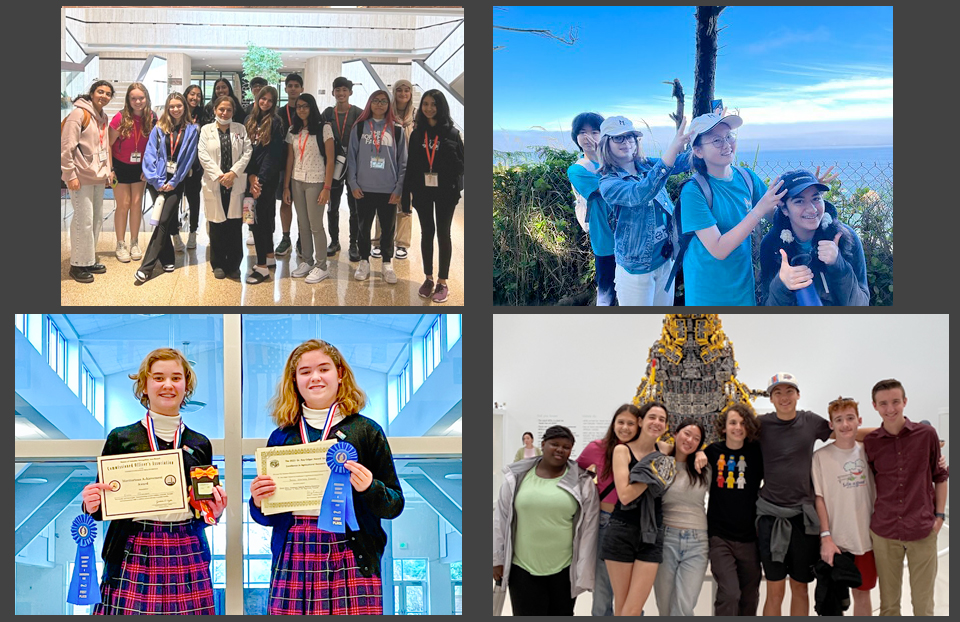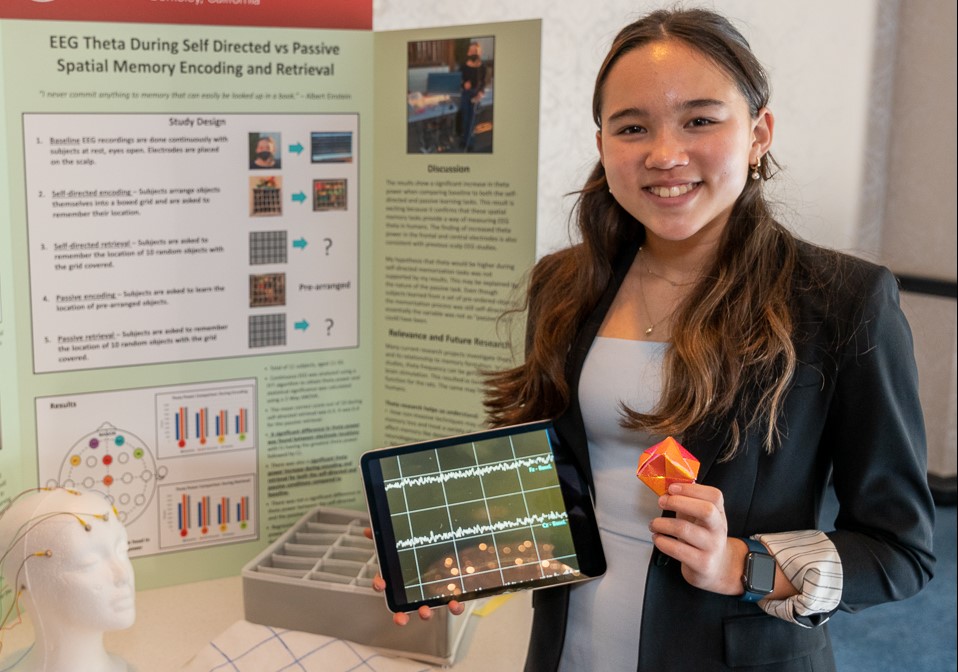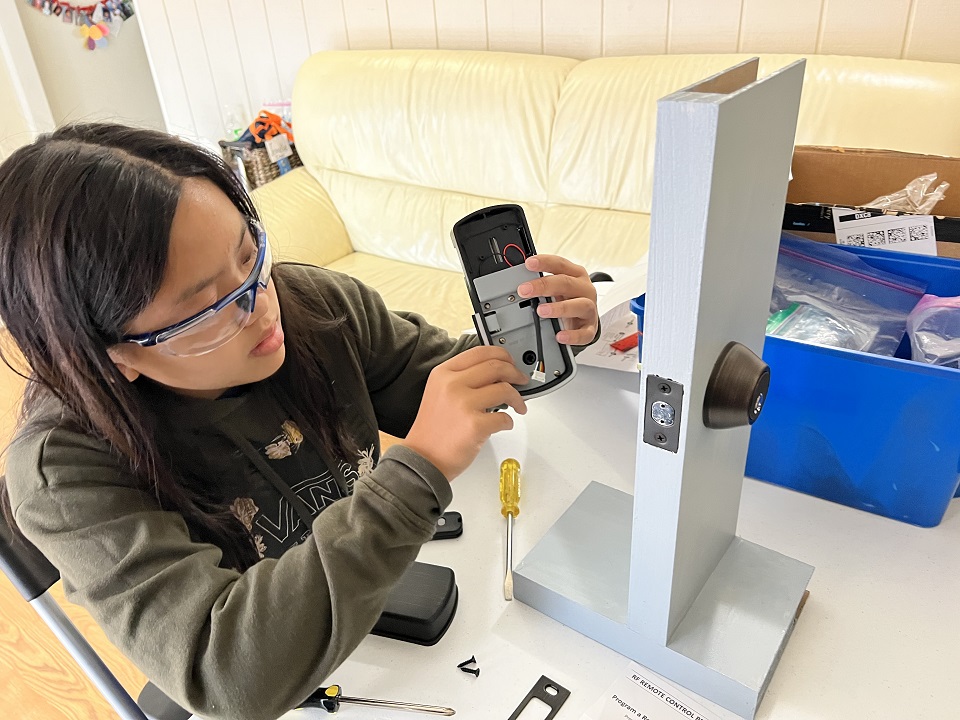Broadcom MASTERS tackle quantum physics and Parkinson’s disease at George Mason University
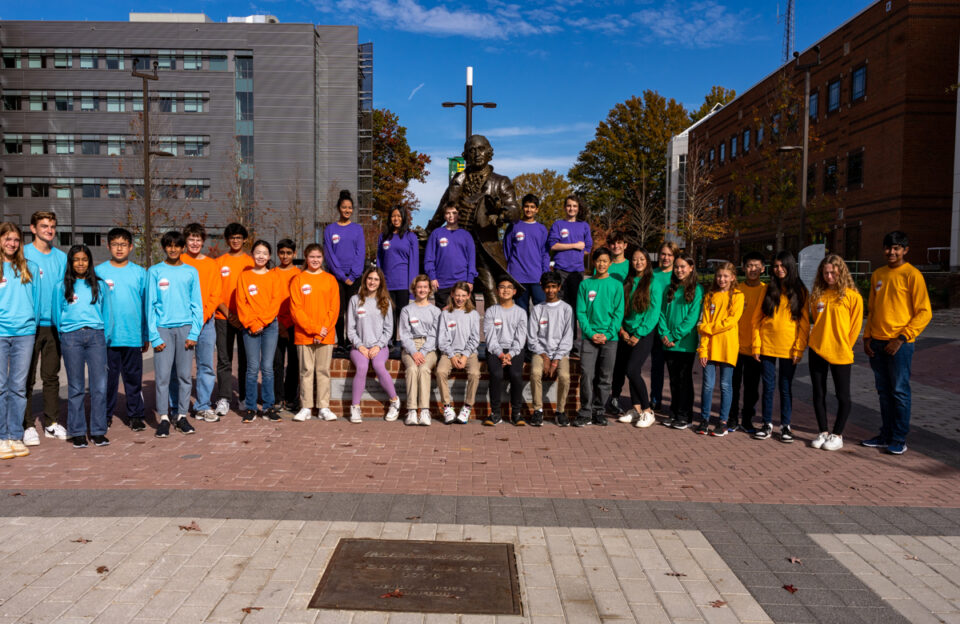
During Broadcom MASTERS Finals Week this year, the top 30 finalists not only participated in project judging and competed in a variety of STEM challenges, but they also had the opportunity to bond as a class and go on fun outings around Washington, D.C. The finalists broke into six teams and worked on challenges, where they were observed and judged on their critical thinking, collaboration and problem-solving skills. A day at George Mason University allowed the finalists to get creative and apply their critical thinking skills to design a board game incorporating the principles of quantum physics and design a device to detect tremors in persons with Parkinson’s disease.
Challenge 1: Quantum Board Game Design
After being introduced to some fundamental principles in the field of quantum physics — by Jessica Rosenberg Associate Professor and Director of Education, Quantum Science and Engineering Center and Nancy Holincheck, Assistant Professor and Associate Director of the Center for Social Equity Through Science Education at George Mason — the finalists applied what they learned in a quick game of Chutes and Ladders. This activity brought to life how quantum physics could be integrated into a popular board game. Each group was then tasked with developing their own set of quantum-focused rules in other classic board games. The gold and purple teams based their game design on Monopoly, while the green and orange teams reworked the rules of chess, the blue team increased the complexities of Sorry! and the silver team made Battleship even less predictable.
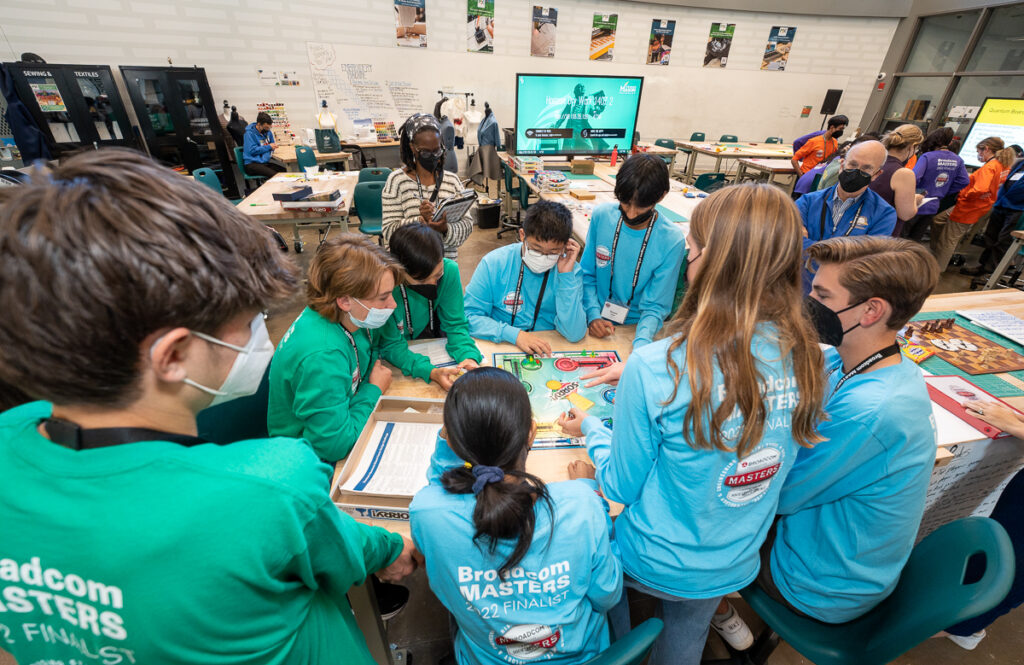
By removing elements and adding others, like dice and pie wheel spinners, each team exhibited their understanding of the three key quantum principles of superposition, entanglement and measurement in their games. Once each team finished the design phase, it was time to test out the new games.
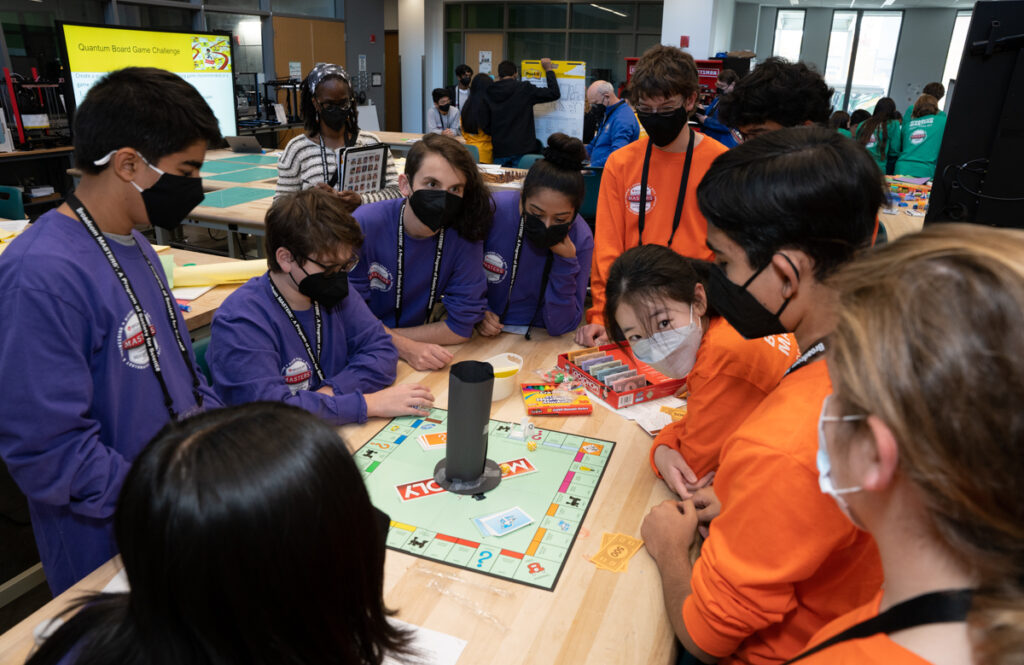
The orange team played the purple team’s three-player quantum Monopoly game, while the purple team played the orange team’s quantum chess game. The blue team explained their quantum version of Sorry! to the green team, then learned to play the green team’s game of quantum chess. The gold team also put a quantum twist on Monopoly, calling it Quanopoly, as they explained game play to the silver team. In turn, the silver team explained to the gold team how they incorporated dice and limited guesses to create quantum Battleship.
Challenge 2: Parkinson’s disease Tremor Detection Tool
Also set at George Mason University, the second challenge tasked finalists with designing a prototype to detect and identify classic symptoms and early signs of Parkinson’s disease — such as tremors, limb rigidity and imbalance. The challenge, led by Lance Liotta, Co-Director and Co-Founder of the Center for Applied Proteomics and Molecular Medicine (CAPMM), and Marissa Howard, Postdoctoral Research Fellow, helped finalists understand how different arm muscles control the hands and what kinds of sensors would be needed to detect tremors. Once that was understood, each team set out to design their prototypes, keeping in mind that the device should be reliable, safe, user friendly and inexpensive.
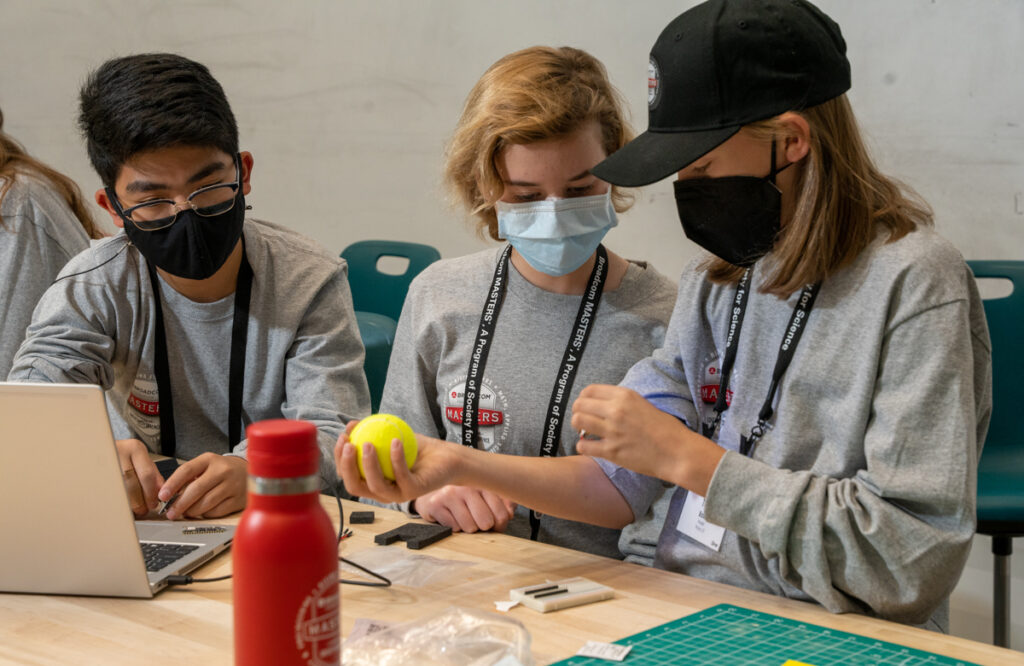
For the silver team, material costs and comfort were top of mind. They designed their prototype to be made of recycled polyester and function similarly to a blood pressure cuff. The device would automatically send tremor data to the patient’s neurologist via confidential email for analysis and treatment.
The purple team chose to focus their design on detecting pill-rolling finger tremors, another hallmark of Parkinson’s, that makes it hard for people with the disease to write or hold other small objects between the thumb and index finger. During their presentation, the purple team explained how they would make this option practical for people in rural areas or those unable to drive.
The green team’s design took inspiration from a smart watch to detect and record frequency of tremors, and they expressed the importance of their bands collecting accurate data and being accessible to everyone, regardless of demographic.
Like the green team, the blue team also chose a smart watch design for their prototype. Theirs incorporated a one size fits all glove with a design that would be equitable and accessible to all patients.
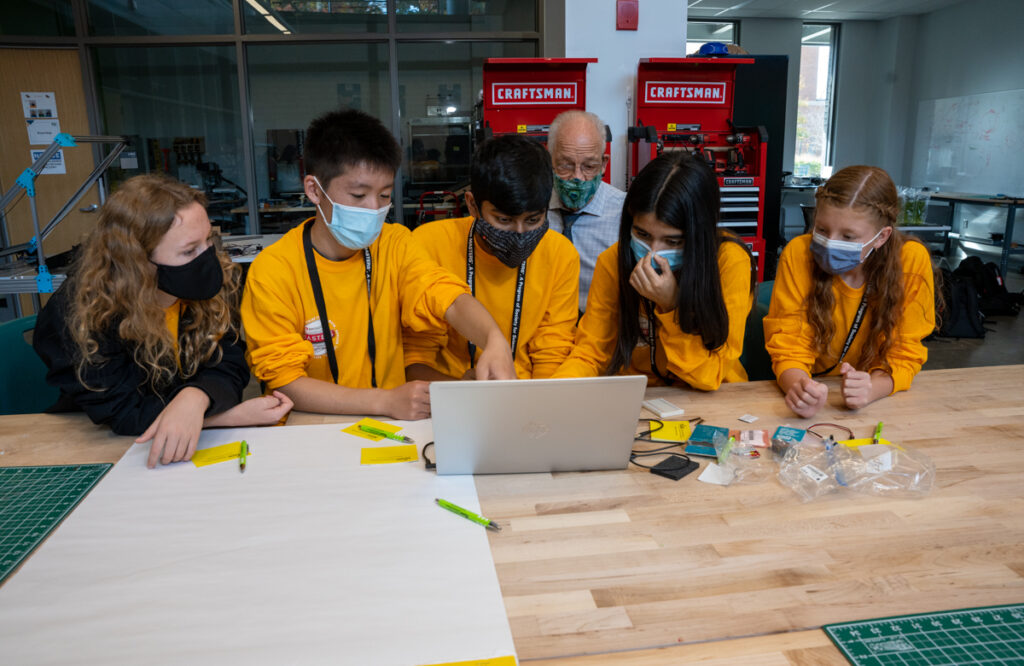
With a focus on detecting slight tremors that occur during the early stages of Parkinson’s disease, the gold team designed a user-friendly, easy-to-wear glove. The glove would come in multiple sizes and include a moveable sensor capable of detecting tremors in different muscle locations.
The orange team designed the “ParkinBand,” which would be used to detect tension in forearm muscles, like when a person squeezes a tennis ball, or be worn while sleeping. With a desire to keep the tool user friendly, the band doesn’t require any external input from the user.
Each team got creative and had a lot of fun during these challenges, demonstrating teamwork, critical thinking skills, leadership and overall STEM mastery.
In case you missed it, check out the top winners of this year’s premier middle school STEM competition here.
